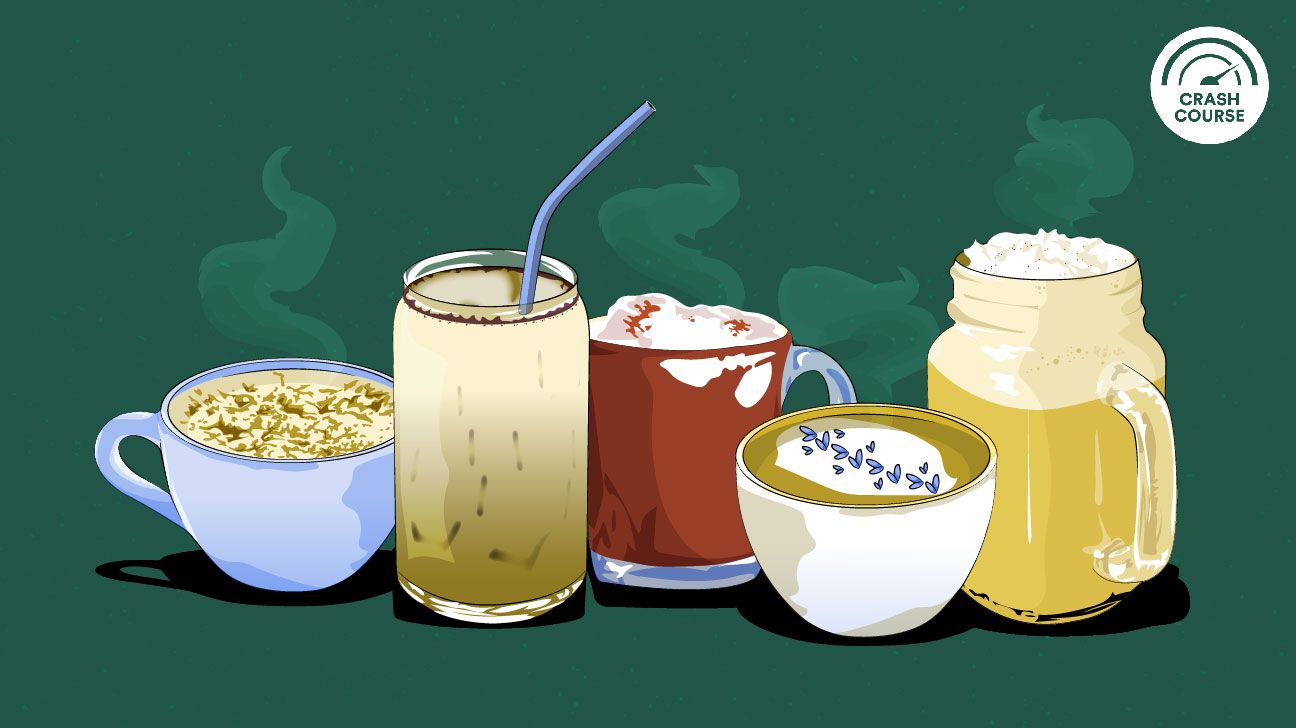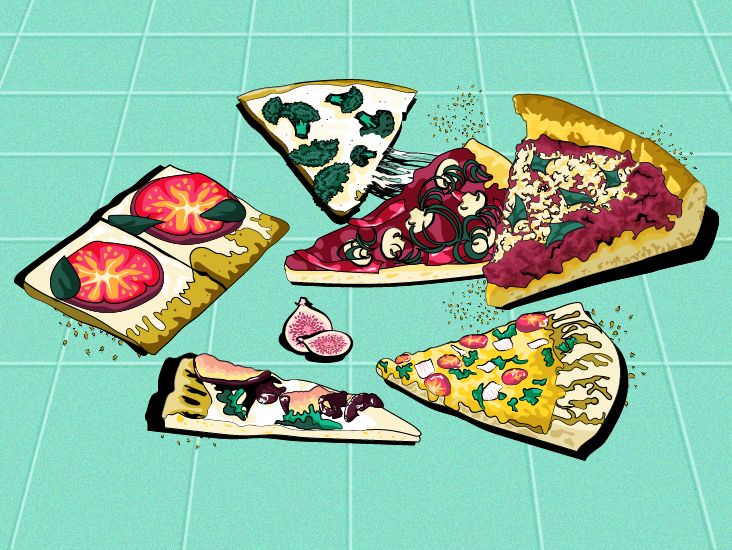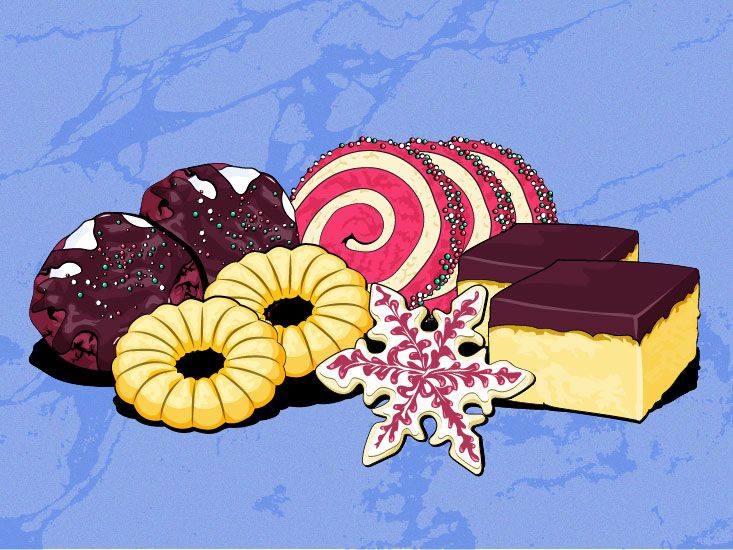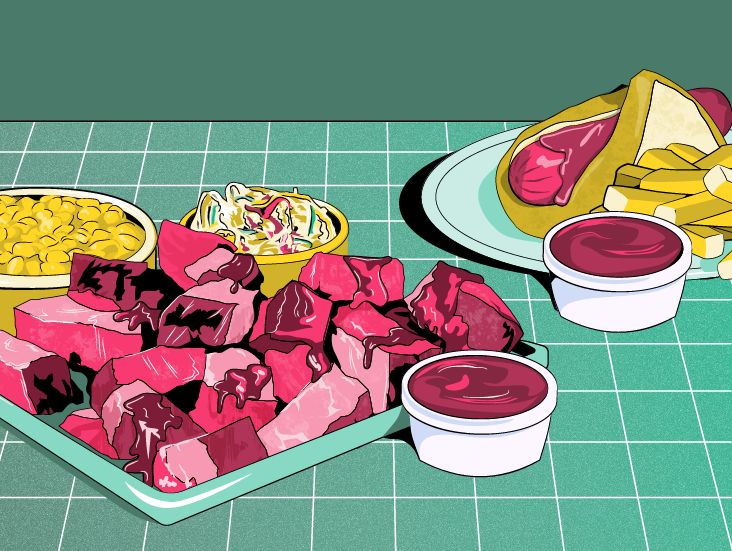
A lot of people love a good latte. Especially as temperatures start to dip, a steaming cup of frothy warmth is the perfect way to start a chilly fall morning. But not everybody is A-OK with the prospect of playing barista at home.
Creating your own real-deal latte, complete with fancy pattern on top, can seem like the kind of thing that requires culinary training (or at least a few shifts at Starbucks).
Still, you don’t have to be an espresso expert to master the basics of latte-making. We’re taking you from the ground(s) up with this crash course on lattes for fall.
Pop quiz, coffee lovers: What exactly is a latte? Truth be told, it’s a pretty simple affair. A latte can (technically) be any drink made with espresso and steamed milk. Most “official” formulas call for a 2-to-1 ratio of steamed milk to espresso, while others claim it’s not a latte unless it has a layer of foam on top, at least 1 centimeter thick.
That said, a variety of caffeinated incarnations also go by the name latte. Just about any beverage that starts with some form of coffee and adds some form of milk can adopt this Italian moniker. (You’ve probably seen tea and golden milk lattes that contain no coffee at all.)
While these might not meet the classic standards of latte ingredients, the cultural milieu casts the net pretty wide on what “counts.”
Believe it or not, the latte predates 1990s Seattle coffeeshop culture by a long shot (har har). The coffee-plus-milk combo has been a staple in European culture since at least the 1600s and goes by many names: café au lait in French, Milchkaffee in German, and café con leche in Spanish.
Though it’s not exactly clear when lattes emerged as the beverage we now drink in droves, many credit Berkeley, California café owner Lino Meiorin with creating the modern latte in the 1950s. From there, the steamy, creamy drinks were popularized as coffee chains spread across the nation with their own signature versions. The rest is, well, history.
To accent or not to accent
What’s the deal with the accent over the e (as in, latté)? It’s… kinda made up. General consensus has it that the addition of the accent is an example of American “hyperforeignism” — the intent to show something comes from a foreign culture. The only accent that belongs here is the one on caffè, the Italian word for coffee.
Grab yer beans and fire up the machine! Here’s how to make a traditional latte with an espresso maker.
Ingredients
- 2 ounces espresso beans
- 1/2 cup whole milk
Directions
- Using an espresso machine, pull two shots of espresso. Pour into a glass or mug.
- Pour the milk into a frothing pitcher. Place the steaming wand about 1/2 an inch under the surface of the milk and turn on the steam.
- Once the milk has doubled in size, move the steaming wand to the side of the pitcher to create a whirlpool effect. Continue steaming until milk has achieved a smooth texture with micro-bubbles.
- Pour milk into the center of the espresso.
Despite lattes’ simplicity, there’s a lot to know about how their components work together to make caffeinated magic. Here’s the rundown on latte FAQ.
Iced vs. hot?
As any veteran latte drinker knows, your barista’s first question is always the same: “Hot or iced?” A hot latte, with its base of espresso and topcoat of frothed milk, is the most classic preparation (described in the recipe above).
But turning a hot latte into a refreshing cold drink isn’t as simple as pouring your mug over a tumbler of ice. (Ice cubes and hot frothed milk aren’t exactly a great mix.) Instead, an iced latte is typically made with a base of chilled espresso or drip coffee, plus cold milk and other flavor add-ins.
What kind of espresso should be used?
Arabica or robusta? Italian or Peruvian? Whole beans or pre-ground? The right beans to use for brewing espresso shots is largely a matter of personal preference. According to many connoisseurs, though, the darker the roast the better, as it complements milk’s creaminess.
Just note that espresso beans are roasted longer than regular coffee beans — so if a recipe calls for espresso beans specifically, it’s best to use them. Substituting with regular coffee beans could create a finished product that tastes funky and won’t give you espresso’s signature “crema” (the reddish-brown foam that sits atop a freshly pulled shot).
And while it might scandalize some purists to use anything but espresso in a latte, lots of recipes start with plain old drip coffee. Brewing it strong helps mimic the intensity of a shot of espresso.
Caff vs. decaf?
Lattes can be made with espresso of any caffeine level, from “why bother” decaf to jolt-you-out-of-bed ultra-caffeinated. The amount of caff in your beans won’t affect taste, so it’s up to you to decide just how wide-awake (or mellowed out) you’d like to be after drinking.
What kind of milk should be used?
The perfect latte froth is smooth and almost velvety — not big and bubbly. (Repeat after us: I will not make a froth that looks like it belongs in an 80s hair metal band.) Microbubbles in the steamed milk give it a texture some people liken to wet paint or melted ice cream.
So which milk is best for making foam with those oh-so-desirable itty-bitty air pockets? Many latte lovers swear by whole milk as the ultimate option, since its fat content lends itself well to frothing (and adds richness and flavor). However, others champion 2 percent or even skim milk, with the belief that whole milk’s fat weighs down the frothy bubbles.
Want to go plant-based? It’s possible to use alt-milks like almond, cashew, soy, or rice milk as your froth foundation — but because of their different composition of fats and sugars, getting the perfect texture may be tricky. Creamier, higher-in-fat nondairy milks like oat or coconut may be your best bet.
We love a handcrafted, barista-made latte… but we’re not crazy about coffeeshop prices. Cozy up your fall (and save some green) with these homemade lattes.
Brown sugar cardamom latte
You know cinnamon, but have you met its earthier cousin, cardamom? No espresso machine or milk frother are required for this latte that pairs cardamom’s piquant bite with the sweetness of brown sugar.
Apple pie spice latte
It’s not fall without apples in everything. Apple pie, applesauce, and — why not? — apple-flavored lattes. This fruity latte is just the thing for when you can’t decide between hot apple cider or coffee. Hang onto leftovers of the apple pie syrup for drizzling into yogurt or oatmeal.
Iced honey cinnamon latte
If second summer means the weather’s taking its sweet time to cool off, a piping hot drink might not sound so appealing. Instead, DIY an iced latte that won’t leave you sweating through your flannel jammies. This cool honey cinnamon latte creates an irresistible honey-cinnamon simple syrup, then combines it with creamy oat milk and a shot (or two!) of espresso.
Healthy chocolate pumpkin spice latte
You knew we couldn’t get through this list without some form of PSL. This health-ified, chocolatey version clocks in at just 32 calories — a far cry from the super sweet, high calorie lattes you’ll find at most coffeeshops. Meanwhile, cashew milk keeps things vegan. Make a big batch to enjoy all week long.
Lavender oat milk latte
Research shows that lavender is known for its calming effects. How ‘bout reaping those benefits in an aromatic lavender latte? Try this one with decaf coffee for a brew that won’t give you the jitters.
Flavor inspo for fall lattes
Need a few more pointers on making fall-flavored lattes? Try these tips to make the perfect cuppa for tailgates, leaf peeping, and cozy blanket snuggling.
- Add depth with fall spices, such as cinnamon, nutmeg, cloves, and cardamom.
- Fruity flavors make tasty syrups — anyone for apple, pear, or cranberry?
- Ignore the PSL haters! Pumpkin is always on trend for fall drinks.
- Borrow the warming flavors of chai tea with a chai latte.
- Experiment with sweeteners like maple syrup, brown sugar, honey, and agave.
However you like your latte, live it up and lift your cup in fall!




